7890中文版
- 格式:pptx
- 大小:4.81 MB
- 文档页数:61
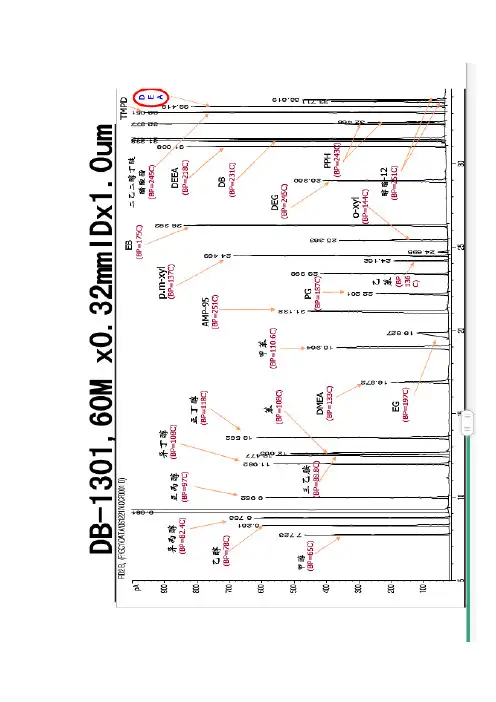
现场安装教材7890B气相色谱仪Agilent 7890B GC (OpenLAB ChemStation中文版C.01.05)--现场培训教材一、培训目的:基本了解7890B 硬件操作。
掌握化学工作站的开机,关机,参数设定, 学会数据采集,数据分析的基本操作。
二、培训准备:1、仪器设备: Agilent 7890B GC∙进样口: 填充柱进样口(PP);毛细柱进样口(S/SL);冷柱头进样口(COC);VI 进样口;PTV 进样口;多模式进样口MMI。
∙检测器:FID;TCD;u-ECD, NPD,FPD+。
∙色谱柱:P/N 19091J-413, HP-5 毛细柱:30m,ⅹ320μχ0.25μ∙注射器:自动液体进样器(ALS)用10ul 注射器或手动进样用10ul 注射器。
∙进样体积:1 ul 或见Check Out 方法。
2、气体准备:∙FID,NPD,FPD :高纯H2 (99.999%),干燥无油压缩空气。
∙uECD: 高纯N2 (99.999%)载气,:高纯N2 (99.999%)或高纯He (99.999%)。
7890B/GC 化学工作站基本操作步骤:(一)、开机:1、打开气源(按相应的所需气体)。
2、打开计算机,进入中文Windows XP 或者Windows7 画面。
3、打开7890B GC 电源开关,先设定7890B GC 及PC 的IP 地址,然后在软件里设定7890B GC 的IP 地址。
点击屏幕左下角“开始”,选择“所有程序(P)”,择”AgilentTechnologies”选择“OpenLAB”,选择OpenLAB Control,或单击桌面图标,则会进入到下面的界面:下面步骤如果已经配置过,则不需要操作通过点击菜单左上方的,可以分别创建位置和仪器,得到如下的界面然后点击操作区域的,通过点击:“配置模块”,进入仪器配置界面,把GC7890B添加到右边,点击配置。
仪器的IP 地址。
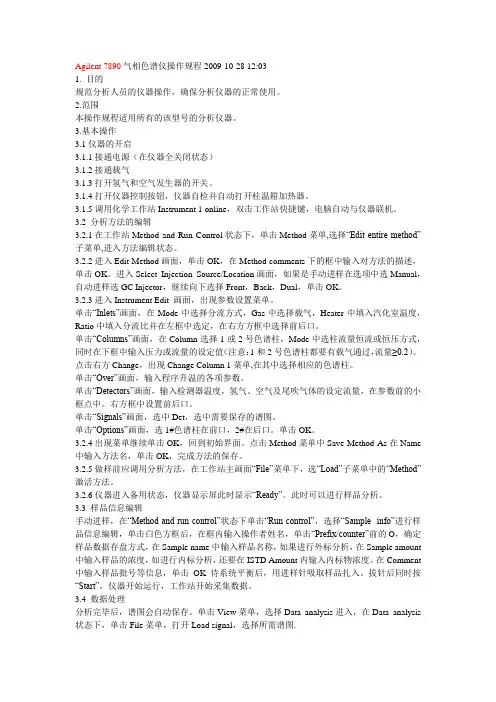
Agilent 7890气相色谱仪操作规程2009-10-28 12:031. 目的规范分析人员的仪器操作,确保分析仪器的正常使用。
2.范围本操作规程适用所有的该型号的分析仪器。
3.基本操作3.1仪器的开启3.1.1接通电源(在仪器全关闭状态)3.1.2接通载气3.1.3打开氢气和空气发生器的开关。
3.1.4打开仪器控制按钮,仪器自检并自动打开柱温箱加热器。
3.1.5调用化学工作站Instrument 1 online,双击工作站快捷键,电脑自动与仪器联机。
3.2 分析方法的编辑3.2.1在工作站Method and Run Control状态下,单击Method菜单,选择“Edit entire method”子菜单,进入方法编辑状态。
3.2.2进入Edit Method画面,单击OK,在Method comments下的框中输入对方法的描述,单击OK。
进入Select Injection Source/Location画面,如果是手动进样在选项中选Manual,自动进样选GC Injector,继续向下选择Front,Back,Dual,单击OK。
3.2.3进入Instrument Edit 画面,出现参数设置菜单。
单击“Inlets”画面,在Mode中选择分流方式,Gas中选择载气,Heater中填入汽化室温度,Ratio中填入分流比并在左框中选定,在右方方框中选择前后口。
单击“Columns”画面,在Column选择1或2号色谱柱,Mode中选柱流量恒流或恒压方式,同时在下框中输入压力或流量的设定值(注意:1和2号色谱柱都要有载气通过,流量≥0.2)。
点击右方Change,出现Change Column 1菜单,在其中选择相应的色谱柱。
单击“Over”画面,输入程序升温的各项参数。
单击“Detectors”画面,输入检测器温度,氢气、空气及尾吹气体的设定流量,在参数前的小框点中。
右方框中设置前后口。
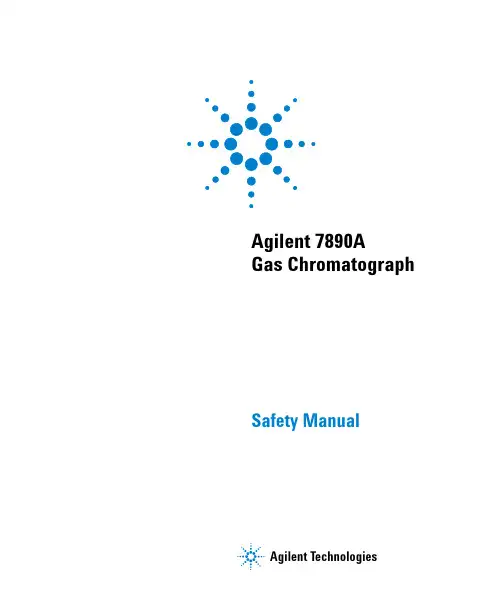
Agilent 7890AGas Chromatograph Safety ManualNotices© Agilent Technologies, Inc. 2009, 2011No part of this manual may be reproduced in any form or by any means (including elec-tronic storage and retrieval or translation into a foreign language) without prior agree-ment and written consent from Agilent Technologies, Inc. as governed by United States and international copyright laws. Manual Part NumberG3430-90013EditionFourth edition, June 2011Third edition, May 2009Second edition, December 2007First edition, February 2007Printed in USA and ChinaAgilent Technologies, Inc.2850 Centerville Road Wilmington, DE 19808-1610 USA安捷伦科技(上海)有限公司上海市浦东新区外高桥保税区英伦路412号联系电话:(800)820 3278WarrantyThe material contained in thisdocument is provided “as is,” andis subject to being changed,without notice, in future editions.Further, to the maximum extentpermitted by applicable law,Agilent disclaims all warranties,either express or implied, withregard to this manual and anyinformation contained herein,including but not limited to theimplied warranties ofmerchantability and fitness for aparticular purpose. Agilent shallnot be liable for errors or forincidental or consequentialdamages in connection with thefurnishing, use, or performance ofthis document or of anyinformation contained herein.Should Agilent and the user havea separate written agreementwith warranty terms covering thematerial in this document thatconflict with these terms, thewarranty terms in the separateagreement shall control.Safety NoticesA CAUTION notice denotes ahazard. It calls attention to anoperating procedure, practice, orthe like that, if not correctlyperformed or adhered to, couldresult in damage to the product orloss of important data. Do notproceed beyond a CAUTION noticeuntil the indicated conditions arefully understood and met.A WARNING notice denotes ahazard. It calls attention to anoperating procedure, practice, orthe like that, if not correctlyperformed or adhered to, couldresult in personal injury or death.Do not proceed beyond aWARNING notice until theindicated conditions are fullyunderstood and met.Agilent 7890A Gas ChromatographSafety Manual1IntroductionImportant Safety Warnings 4Hydrogen Safety 7Micro-Electron Capture Detector (µECD) 14 Fuses and Batteries 16Safety and Regulatory Certifications 17 Intended Use 20Cleaning 20Recycling the Product 20IntroductionImportant Safety WarningsBefore moving on, there are several important safety notices that youshould always keep in mind when using the Agilent 7890A GC.When handling/using chemicals for preparation or use within the GC, all applicablelocal and national laboratory safety practices must be followed. This would include,but is not limited to, correct use of Personal Protective Equipment (PPE), correct useof storage vials, and correct handling of chemicals, as defined in the laboratory’sinternal safety analysis and standard operating procedures. Failure to adhere tolaboratory safety practices could lead to injury or death.Many internal parts of the GC carry dangerous voltagesIf the GC is connected to a power source, even if the power switch is off,potentially dangerous voltages exist on:•The wiring between the GC power cord and the AC power supply, the AC power supply itself, and the wiring from the AC power supply tothe power switch.With the power switch on, potentially dangerous voltages also exist on:•All electronics boards in the instrument.•The internal wires and cables connected to these boards.•The wires for any heater (oven, detector, inlet, or valve box).All these parts are shielded by covers. With the covers in place, it should be difficultto accidentally make contact with dangerous voltages. Unless specificallyinstructed to, never remove a cover unless the detector, inlet, or oven are turned off.If the power cord insulation is frayed or worn, the cord must be replaced. Contactyour Agilent service representative.IntroductionDo not use an Uninterruptable Power Supply (UPS) with a GCIf the area where the GC is located suddenly looses power, an unsafecondition can result if the GC remains powered on. Do not use the GCwith a UPS.Electrostatic discharge is a threat to GC electronicsThe printed circuit (PC) boards in the GC can be damaged by electrostaticdischarge. Do not touch any of the boards unless it is absolutelynecessary. If you must handle them, wear a grounded wrist strap and takeother antistatic precautions. Wear a grounded wrist strap any time youmust remove the GC right side cover.Many parts are dangerously hotMany parts of the GC operate at temperatures high enough to causeserious burns. These parts include but are not limited to:•The inlets•The oven and its contents•The detectors•The column nuts attaching the column to an inlet or detector•The valve boxYou should always cool these areas of the GC to room temperature beforeworking on them. They will cool faster if you first set the temperature ofthe heated zone to room temperature. Turn the zone off after it hasreached the setpoint. If you must perform maintenance on hot parts, use awrench and wear thermally protective gloves. Whenever possible, cool thepart of the instrument that you will be maintaining before you beginworking on it.Be careful when working behind the instrument. During cool-down cycles, the GCemits hot exhaust which can cause burns.IntroductionThe insulation around the inlets, detectors, valve box, and the insulation cups ismade of refractory ceramic fibers. To avoid inhaling fiber particles, we recommendthe following safety procedures: ventilate your work area; wear long sleeves,gloves, safety glasses, and a disposable dust/mist respirator; dispose of insulationin a sealed plastic bag; wash your hands with mild soap and cold water afterhandling the insulation.Oven thermal leaksObjects passing through the oven door seal can cause thermal leaks which createhazardous hot spots which cause burns and melt equipment.Do not allow wiring or temperature probes to pass through the oven doorjam. Agilent recommends using one of the access holes.Introduction Hydrogen SafetyHydrogen gas may be used as carrier gas, and/or as fuel for the FID, FPD,and NPD. When mixed with air, hydrogen can form explosive mixtures.When using hydrogen (H2) as the carrier gas or fuel gas, be aware that hydrogengas can flow into the GC oven and create an explosion hazard. Therefore, be surethat the supply is turned off until all connections are made and ensure that the inletand detector column fittings are either connected to a column or capped at all timeswhen hydrogen gas is supplied to the instrument.Hydrogen is flammable. Leaks, when confined in an enclosed space, may create afire or explosion hazard. In any application using hydrogen, leak test allconnections, lines, and valves before operating the instrument. Always turn off thehydrogen supply at its source before working on the instrument.Hydrogen is a commonly used GC carrier gas. Hydrogen is potentiallyexplosive and has other dangerous characteristics.•Hydrogen is combustible over a wide range of concentrations. Atatmospheric pressure, hydrogen is combustible at concentrations from4% to 74.2% by volume.•Hydrogen has the highest burning velocity of any gas.•Hydrogen has a very low ignition energy.•Hydrogen that is allowed to expand rapidly from high pressure into the atmosphere can self-ignite due to an electrostatic spark.•Hydrogen burns with a nonluminous flame which can be invisible under bright light.GC precautionsWhen using hydrogen as a carrier gas, remove the large round plasticcover for the MSD transfer line located on the GC left side panel. In theunlikely event of an explosion, this cover may dislodge.IntroductionHydrogen shutdownHydrogen gas may be used as a carrier or as fuel for some detectors.When mixed with air, hydrogen can form explosive mixtures.The GC monitors inlet and auxiliary gas streams. If a stream shuts downbecause it is unable to reach its flow or pressure setpoint and if thatstream is configured to use hydrogen, the GC assumes that a leak hasoccurred and declares a hydrogen safety shutdown. The effects are:•The offending channel and any associated channels (such as septumpurge) are set off.•The split valves in the split/splitless and PTV inlets open.•The oven (heater and fan) turns off.•The small heated zones are turned off.•An alarm tone sounds.To recover from this state, fix the cause of the shutdown (tank valveclosed, serious leak, others). Turn the instrument off, then back on.The GC cannot always detect leaks in inlet and/or detector gas streams. For thisreason, it is vital that column fittings should always be either connected to acolumn, or have a cap or plug installed. The H2 streams must be configured forhydrogen so that the GC is aware of hydrogen use.IntroductionDangers unique to GC/MSD operationHydrogen presents a number of dangers. Some are general, others areunique to GC or GC/MSD operation. Dangers include, but are not limitedto:•Combustion of leaking hydrogen.•Combustion due to rapid expansion of hydrogen from a high-pressure cylinder.•Accumulation of hydrogen in the GC oven and subsequent combustion (see your GC documentation and the label on the top edge of the GCoven door).•Accumulation of hydrogen in the MSD and subsequent combustion. Hydrogen accumulation in a GC/MSDThe GC/MSD cannot always detect leaks in inlet and/or detector gas streams. Forthis reason, it is vital that column fittings should always be either connected to acolumn, or have a cap or plug installed. The H2 streams must be configured forhydrogen so that the GC is aware of hydrogen use.All users should be aware of the mechanisms by which hydrogen canaccumulate (Table 1) and know what precautions to take if they know orsuspect that hydrogen has accumulated. Note that these mechanisms applyto all mass spectrometers, including the GC/MSD.Table 1Potential hydrogen accumulation mechanisms in GC/MSDMechanism ResultsMass spectrometer turned off A mass spectrometer can be shut downdeliberately. It can also be shut down accidentallyby an internal or external failure. A massspectrometer shutdown does not shut off the flowof carrier gas. As a result, hydrogen may slowlyaccumulate in the mass spectrometer.IntroductionMass spectrometer automated isolation valves closed Some mass spectrometers are equipped with automated diffusion pump isolation valves. In these instruments, deliberate operator action or various failures can cause the isolation valves to close. Isolation valve closure does not shut off the flow of carrier gas. As a result, hydrogen may slowly accumulate in the mass spectrometer.Mass spectrometer manual isolation valves closed Some mass spectrometers are equipped with manual diffusion pump isolation valves. In these instruments, the operator can close the isolation valves. Closing the isolation valves does not shut off the flow of carrier gas. As a result, hydrogen may slowly accumulate in the mass spectrometer.GC off A GC can be shut down deliberately. It can also be shut down accidentally by an internal or external failure. Different GCs react in different ways. If a 7890A GC equipped with Electronic Pressure Control (EPC) is shut off, the EPC stops the flow of carrier gas. If the carrier flow is not under EPC control, the flow increases to its maximum. This flow may be more than some mass spectrometers can pump away, resulting in the accumulation of hydrogen in the mass spectrometer. If the mass spectrometer is shut off at the same time, the accumulation can be fairly rapid.Power failure If the power fails, both the GC and mass spectrometer shut down. The carrier gas, however, is not necessarily shut down. As described previously, in some GCs a power failure may cause the carrier gas flow to be set to maximum. As a result, hydrogen may accumulate in the mass spectrometer.Table 1Potential hydrogen accumulation mechanisms in GC/MSD (continued)Mechanism ResultsPrecautionsTake the following precautions when operating a GC/MSD system with hydrogen carrier gas.Equipment precautionYou MUST make sure the front side-plate thumbscrew is fastenedfinger-tight. Do not overtighten the thumbscrew; it can cause air leaks.Major GC leaks or a column is missing or brokenIf the GC is off and configured for hydrogen, therear oven flap is open to vent out the hydrogen.Proper lab venting, as described in the Site Prepmanual, is recommended. If there is a significantleak, such as a missing column, the GC inlet, PCM,and Aux are provided with flow limiting frits tominimize any hydrogen accumulation within theoven. When the GC is on, major leaks are detectedautomatically.Table 1Potential hydrogen accumulation mechanisms in GC/MSD (continued)Mechanism ResultsOnce hydrogen has accumulated in a system, extreme caution must be used when removing it. Incorrect startup of a system filled with hydrogen can cause an explosion.After a power failure, the mass spectrometer may start up and begin the pumpdown process by itself. This does not guarantee that all hydrogen has been removed from the system or that the explosion hazard has been removed.Failure to secure your MSD as described above greatly increases the chance of personal injury in the event of an explosion.You must remove the plastic cover over the glass window on the front of a 5975 MSD. In the unlikely event of an explosion, this cover may dislodge.General laboratory precautions•Avoid leaks in the carrier gas lines. Use leak-checking equipment to periodically check for hydrogen leaks.•Eliminate from your laboratory as many ignition sources as possible (open flames, devices that can spark, sources of static electricity, etc.).•Do not allow hydrogen from a high pressure cylinder to vent directly to atmosphere (danger of self-ignition).•Use a hydrogen generator instead of bottled hydrogen.•Provide proper system ventilation as described in the Site Prep manual. Operating precautions•Turn off the hydrogen at its source every time you shut down the GC or MSD.•Turn off the hydrogen at its source every time you vent the MSD (do not heat the capillary column without carrier gas flow).•Turn off the hydrogen at its source every time isolation valves in an MSD are closed (do not heat the capillary column without carrier gas flow).•Turn off the hydrogen at its source if a power failure occurs.•If a power failure occurs while the GC/MSD system is unattended, even if the system has restarted by itself:1Immediately turn off the hydrogen at its source.2Turn off the GC.3Turn off the MSD and allow it to cool for 1 hour.4Eliminate all potential sources of ignition in the room.5Open the vacuum manifold of the MSD to atmosphere.6Wait at least 10 minutes to allow any hydrogen to dissipate.7Start up the GC and MSD as normal.When using hydrogen gas, check the system for leaks to prevent possiblefire and explosion hazards based on local Environmental Health andSafety (EHS) requirements. Always check for leaks after changing a tankor servicing the gas lines. Always make sure the vent line is vented into afume hood.Measuring hydrogen gas flowsDo not measure hydrogen together with air or oxygen. This can create explosivemixtures that may be ignited by the automatic ignitor.To avoid this hazard:Turn the automatic ignitor off before you begin.Always measure gases separately.When measuring gas flows on a detector using hydrogen for the detectorflame or carrier gas, measure the hydrogen flow separately. Never allowan air stream to enter when hydrogen is present in the flow meter.Micro-Electron Capture Detector (µECD)The µECD contains a cell plated with 63Ni, a radioactive isotope. The betaparticles released at the energy level in the detector have little penetratingpower—the surface layer of the skin or a few sheets of paper will stopmost of them—but they may be hazardous if the isotope is ingested orinhaled. For this reason, handle the cell with care. Cap the detector inletand outlet fittings when the detector is not in use. Never introducecorrosive chemicals into the detector. Vent detector exhaust outside thelaboratory environment.Refer to the safety documentation provided with the detector forimportant details about safety, maintenance, and compliance with localgovernment regulation.Materials that may react with the 63Ni source, either to form volatile products or tocause physical degradation of the plated film, must be avoided. These materialsinclude oxidizing compounds, acids, wet halogens, wet nitric acid, ammoniumhydroxide, hydrogen sulfide, PCPs, and carbon monoxide. This list is not exhaustivebut indicates the kinds of compounds that may cause damage to 63Ni detectors.In the extremely unlikely event that the oven or the detector-heated zone should gointo thermal runaway (maximum, uncontrolled heating in excess of 400 °C) and thedetector remains exposed to this condition for more than 12 hours, take thefollowing steps:1After turning off the main power and allowing the instrument to cool to roomtemperature, cap the detector inlet and exhaust vent openings. Wear disposableplastic gloves and observe normal laboratory safety precautions.2Contact your local Agilent Technologies sales office or distributor for ECD disposal instructions3Include a letter stating the condition of abuse.It is unlikely, even in this very unusual situation, that radioactive material willescape the cell. However, permanent damage to the 63Ni plating within the cell ispossible; therefore, the cell must be returned for exchange.Do not use solvents to clean the µECD.You may not open the µECD cell unless authorized to do so by your local nuclear regulatory agency. Do not disturb the four socket-head bolts. These hold the cell halves together. United States customers removing or disturbing them is a violation of the terms of the exemption and could create a safety hazard.When handling µECDs:•Never eat, drink, or smoke.•Always wear safety glasses when working with or near open µECDs.•Wear protective clothing such as laboratory jackets, safety glasses, and gloves, and follow good laboratory practices. Wash hands thoroughly with a mild nonabrasive cleaner after handling µECDs.•Cap the inlet and outlet fittings when the µECD is not in use.•Connect the µECD exhaust vent to a fume hood or vent it to the outside. See the latest revision of 10 CFR Part 20 (including AppendixB), or the applicable state regulation. For other countries, consult withthe appropriate agency for equivalent requirements.Agilent Technologies recommends a vent line internal diameter of 6 mm (1/4-inch) or greater. With a line of this diameter, the length is not critical.Fuses and BatteriesThe GC requires fuses and batteries for proper operation. These must onlybe accessed by Agilent trained service personnel.Table 2AC board fusesFuse designation Line voltage Fuse rating and typeF1, F2All20 A, 250 Vac, IEC 127 type f (non-time delay),ceramic bodyF3, F4All8 A, 250 Vac, IEC type f (non-time delay),glass bodyTable 3Logic board batteryBattery designation Battery rating and typeBT13-volt lithium-poly carbon battery, .048A-HR,Panasonic model BR 1225Safety and Regulatory CertificationsThe Agilent 7890A GC conforms to the following safety standards:•Canadian Standards Association (CSA): C22.2 No. 1010.1•CSA/Nationally Recognized Test L aboratory (NRTL): UL 61010•International Electrotechnical Commission (IEC): 61010–1•EuroNorm (EN): 61010–1The Agilent 7890A GC conforms to the following regulations onElectromagnetic Compatibility (EMC) and Radio Frequency Interference(RFI):•CISPR 11/EN 55011: Group 1, Class A•IEC/EN 61326•AUS/NZThis ISM device complies with Canadian ICES-001. Cet appareil ISM estconforme a la norme NMB—001 du Canada.The Agilent 7890A GC is designed and manufactured under a qualitysystem registered to ISO 9001.Instructions for Disposal of Waste Equipment by Users in the EuropeanUnion. This symbol on the product or its packaging indicates that thisproduct must not be disposed of with other waste. Instead, it is yourresponsibility to dispose of your waste equipment by handing it over to adesignated collection point for the recycling of waste electrical andelectronic equipment. The separate collection and recycling of your wasteequipment at the time of disposal will help conserve natural resources andensure that it is recycled in a manner that protects human health and theenvironment. For more information about where you can drop off yourwaste equipment for recycling, please contact your local city recyclingoffice or the dealer from whom you originally purchased the product.InformationThe Agilent Technologies 7890A Gas Chromatograph meets the followingIEC (International Electro-technical Commission) classifications: SafetyClass I, Transient Overvoltage Category II, Pollution Degree 2.This unit has been designed and tested in accordance with recognizedsafety standards and is designed for use indoors in non-classifiedlocations. If the instrument is used in a manner not specified by themanufacturer, the protection provided by the instrument may be impaired.Whenever the safety protection of the Agilent 7890A Gas Chromatographhas been compromised, disconnect the unit from all power sources andsecure the unit against unintended operation.Refer servicing to qualified service personnel. Substituting parts orperforming any unauthorized modification to the instrument may result ina safety hazard.SymbolsWarnings in the manual or on the instrument must be observed during allphases of operation, service, and repair of this instrument. Failure tocomply with these precautions violates safety standards of design and theintended use of the instrument. Agilent Technologies assumes no liabilityfor the customer’s failure to comply with these requirements.See accompanying instructions for moreinformation.Indicates a hot surface.Indicates hazardous voltages.Indicates earth (ground) terminal.Indicates potential explosion hazard.Electromagnetic compatibilityThis device complies with the requirements of CISPR 11. Operation is subject to the following two conditions:•This device may not cause harmful interference.•This device must accept any interference received, includinginterference that may cause undesired operation.If this equipment does cause harmful interference to radio or television reception, which can be determined by turning the equipment off and on, the user is encouraged to try one or more of the following measures:1Relocate the radio or antenna.2Move the device away from the radio or television.3Plug the device into a different electrical outlet, so that the device and the radio or television are on separate electrical circuits.4Make sure that all peripheral devices are also certified.5Make sure that appropriate cables are used to connect the device to peripheral equipment.6Consult your equipment dealer, Agilent Technologies, or an experienced technician for assistance.7Changes or modifications not expressly approved by AgilentTechnologies could void the user’s authority to operate the equipment.Indicates radioactivity hazard.Indicates electrostatic discharge hazard.Indicates a hazard. See the Agilent 7890A GC user documentation for the itemlabeled.Indicates that you must not discard thiselectrical/electronic product in domestichousehold wasteSound Emission Certification for Federal Republic of GermanySound pressureSound pressure L p < 70 dB(A) according to DIN-EN 27779.SchalldruckpegelSchalldruckpegel L P < 70 dB(A) nach DIN-EN 27779.Intended UseAgilent products must only be used in the manner described in theAgilent product user guides. Any other use may result in damage to theproduct or personal injury. Agilent is not responsible for any damagescaused, in whole or in part, by improper use of the products,unauthorized alterations, adjustments or modifications to the products,failure to comply with procedures in Agilent product user guides, or useof the products in violation of applicable laws, rules or regulations. CleaningTo clean the unit, disconnect the power and wipe down with a damp,lint-free cloth.Recycling the ProductFor recycling, contact your local Agilent sales office.。
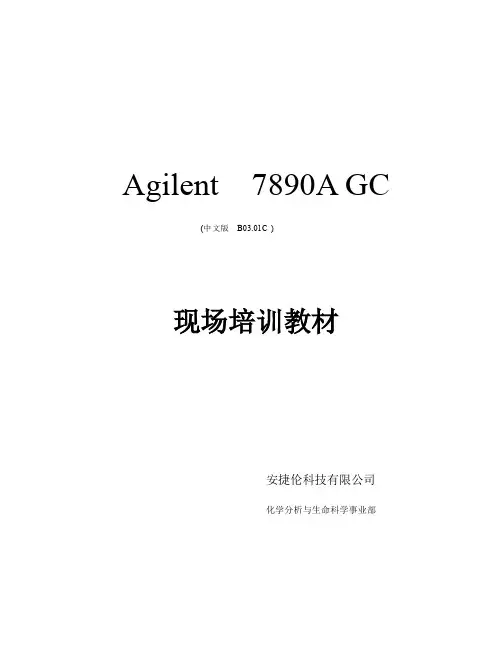
Agilent 7890A GC(中文版B03.01C )现场培训教材安捷伦科技有限公司化学分析与生命科学事业部一、培训目的:∙基本了解7890A 硬件操作。
∙掌握化学工作站的开机,关机,参数设定, 学会数据采集,数据分析的基本操作。
二、培训准备:1、仪器设备:Agilent7890A GC∙进样口: 填充柱进样口(PP);毛细柱进样口(S/SL); 冷柱头进样口(COC); PTV 进样口。
∙检测器:FID;TCD;u ECD; NPD;FPD。
∙色谱柱:P/N 19091J-433, HP-5 毛细柱:30m,ⅹ320μχ0.25μ∙注射器:自动液体进样器(ALS)用10ul 注射器或手动进样用10ul 注射器。
∙进样体积: 1 ul。
2、气体准备:∙FID,NPD,FPD :高纯H2 (99.999%),干燥无油压缩空气。
∙uECD:高纯N2 (99.999%)∙载气, 高纯N2 (99.999%)或高纯He (99.999%)。
7890A/GC 化学工作站基本操作步骤:(一)、开机:1、打开气源(按相应的所需气体)。
2、打开计算机,进入中文Windows XP 画面。
3、打开7890A GC 电源开关。
(7890A 的IP 地址已通过其键盘提前输入进7890A)4、双击桌面的“仪器 1 联机”图标;(或点击屏幕左下角“开始”,选择“程序”,选择“安捷伦化学工作站”,选择“仪器 1 联机”,则化学工作站自动与7890A 通讯,进入的工作站界面如下图:(通讯成功后,7890A 的遥控灯亮)5、从“视图”菜单中选择“方法和运行控制”画面,点击“化学工作站状态”,使其命令前有“√”标志,点击“全部菜单”,使之显示为“短菜单”来调用所需的界面。
(二)7890A 配置编辑:1、点击“仪器”菜单,选择“GC 配置…”进入如图所示画面。
在“连接”画面下,输入GC 名称:如“GC 7890”;可在“注释”处输入7890A 的配置,如“7890GC with FID FPD”。
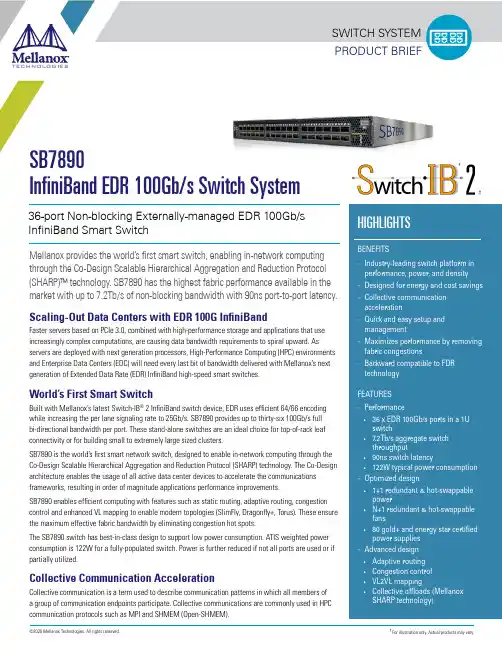
©2020 Mellanox Technologies. All rights reserved.†For illustration only. Actual products may vary.Mellanox provides the world’s first smart switch, enabling in-network computing through the Co-Design Scalable Hierarchical Aggregation and Reduction Protocol (SHARP)™ technology. SB7890 has the highest fabric performance available in the market with up to 7.2Tb/s of non-blocking bandwidth with 90ns port-to-port latency.Scaling-Out Data Centers with EDR 100G InfiniBandFaster servers based on PCIe 3.0, combined with high-performance storage and applications that use increasingly complex computations, are causing data bandwidth requirements to spiral upward. As servers are deployed with next generation processors, High-Performance Computing (HPC) environments and Enterprise Data Centers (EDC) will need every last bit of bandwidth delivered with Mellanox’s next generation of Extended Data Rate (EDR) InfiniBand high-speed smart switches.World’s First Smart SwitchBuilt with Mellanox’s latest Switch-IB ® 2 InfiniBand switch device, EDR uses efficient 64/66 encoding while increasing the per lane signaling rate to 25Gb/s. SB7890 provides up to thirty-six 100Gb/s full bi-directional bandwidth per port. These stand-alone switches are an ideal choice for top-of-rack leaf connectivity or for building small to extremely large sized clusters.SB7890 is the world’s first smart network switch, designed to enable in-network computing through the Co-Design Scalable Hierarchical Aggregation and Reduction Protocol (SHARP) technology. The Co-Design architecture enables the usage of all active data center devices to accelerate the communications frameworks, resulting in order of magnitude applications performance improvements.SB7890 enables efficient computing with features such as static routing, adaptive routing, congestion control and enhanced VL mapping to enable modern topologies (SlimFly, Dragonfly+, Torus). These ensure the maximum effective fabric bandwidth by eliminating congestion hot spots.The SB7890 switch has best-in-class design to support low power consumption. ATIS weighted power consumption is 122W for a fully-populated switch. Power is further reduced if not all ports are used or if partially utilized.Collective Communication AccelerationCollective communication is a term used to describe communication patterns in which all members of a group of communication endpoints participate. Collective communications are commonly used in HPC communication protocols such as MPI and SHMEM (Open-SHMEM).36-port Non-blocking Externally-managed EDR 100Gb/s InfiniBand Smart SwitchSB7890InfiniBand EDR 100Gb/s Switch SystemPRODUCT BRIEFSWITCH SYSTEM †Mellanox SB7890 InfiniBand Switchpage 2© Copyright 2020. Mellanox Technologies. All rights reserved.Mellanox, Mellanox logo, UFM, Switch-IB, UFM, and MLNX-OS are registered trademarks of Mellanox Technologies, Ltd. Mellanox Scalable Hierarchical Aggregation and Reduction Protocol (SHARP) is a trademark of Mellanox Technologies, Ltd. All other trademarks are property of their respective owners.350 Oakmead Parkway, Suite 100, Sunnyvale, CA 94085Tel: 408-970-3400 • Fax: Collective operations have implications on overall application performance and scale. SB7890 introduces the Co-design SHARP technology, which enables the switch to manage collectivecommunications using embedded hardware. Switch-IB 2 improves the performance of selected collective operations by processing the data as it traverses the network, eliminating the need to send data multiple times between end-points. This decreases the amount of data traversing the network and additional benefit of freeing up CPU resources for computation rather than using them to process communication.The network portion of the reduction operation on a fully-populated three-level fat-tree can be completed in less than three microseconds.Building Efficient ClustersSB7890 is the industry’s most cost-effective building block for deploying high performance clusters and data centers. Whether looking at price-to-performance or energy-to-performance, the SB7890 offers superior performance, low power and scale reducing capital and operating expenses providing the best return-on-investment.Mellanox SB7890–19’’ rack mountable 1U chassis –36 QSFP28 non-blocking ports with aggregate data throughput up to 7.2Tb/s (EDR)Switch Specifications–Compliant with IBTA 1.21 and 1.3 –9 virtual lanes:8 data + 1 management –256 to 4Kbyte MTU –Adaptive Routing –Congestion control –Port mirroring–VL2VL mapping–4x48K entry linear forwarding databaseManagement Ports–I 2C (RJ45)–System reset buttonConnectors and Cabling–QSFP28 connectors–Passive copper or active fiber cables –Optical modulesIndicators–Per port status LED Link, Activity–System status LEDs: System, fans, power supplies –Port Error LED –Unit ID LEDPhysical Characteristics–Dimensions: 1.7’’ (43.6 mm) H x 16.85’’ (428mm) W x 27’’ (685.8mm) D –Weight: 11kg (24.2lb)Power Supply–Dual redundant slots –Hot plug operation–Input range:100-127 VAC, 200-240VAC–Frequency: 50-60Hz, single phase AC, 4.5A, 2.9ACooling–Front-to-rear or rear-to-front cooling option–Hot-swappable fan unitPower Consumption–Typical Power with Passive Cables (ATIS): 122WFEATURESSafety–CB –cTUVus –CE –CUEMC (Emissions)–CE –FCC–VCCI –ICES –RCMOperating Conditions–Temperature:–Operating 0ºC to 45ºC–Non-operating -40ºC to 70ºC–Humidity:–Operating 10% to 85% non-condensing–Non-operating 10% to 90% non-condensing –Altitude: Up to 3200mAcoustic–ISO 7779 –ETS 300 753Others–RoHS compliant –Rack-mountable, 1U –1-year warrantyCOMPLIANCETable 1 - Part Numbers and Descriptions53586PB Rev 2.4*P2C is connector side outlet, C2P is connector side inlet.。
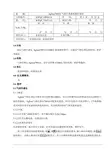
1.0目的制定气相色谱仪Agilent7890A/G1888A 标准操作程序,以规范气相色谱仪的使用,维护等操作。
2.0范围气相色谱仪Agilent7890A 、顶空进样器G1888A 等的使用,维护等操作。
3.0责任质量控制部、质量保证部 4.0 定义/缩略语 无 5.0 程序 5.1气相色谱仪 5.1.1概述Agilent 气相色谱仪可配有顶空进样器G1888A ,自动进样器7693A 等组成可自动进样的气相色谱系统,Agilent 气相色谱仪7890A 可配置双通道,即2个分流/不分流进样口,2个检测器。
采用高精度电子流量控制和温度控制,可以精准的控制气体流量和温度。
5.1.2开机5.1.2.1打开氮气钢瓶总阀门,调节减压阀压力为0.5Mpa 。
5.1.2.2打开仪器电源,仪器进行自检。
5.1.2.3设置色谱条件色谱条件设置一般在软件上设置,也可以通过仪器面版来设置,操作如下:按下需设置的功能设置按钮,输入相应的数值,按按钮确认,如输入错误可按设置数值超过了规定范围,仪器会出现警告提示,并取消该项设置。
Agilent7890A 常用按钮介绍如下表顶空进样器G1888A 常用按钮介绍如下表5.1.3进样需要在电脑进行操作,自动进样和顶空进样将处理好的样品放在对应的位置即可运行,手Agilent 化学工作站操作规程)。
5.1.4 安装或更换色谱柱将仪器柱温,进样口温度,和检测器温度降至50℃以下(关闭火焰),打开柱箱门,拆下堵头或其他色谱柱,将待安装色谱柱装上柱接头和石墨垫,并切去端口2-3cm ,将色谱柱分别接入进样口和检测器口,进样口端要求色谱柱在石墨垫上的长度为4-6mm,检测器端要求将色谱柱装入底部后往回拉1mm左右,用手拧紧柱接头,并用扳手拧紧1/4~1/2圈。
色谱柱安装后,应保持色谱柱在进样口和检测器下方呈垂直方向并应不受力。
安装色谱柱后应在低于允许温度20℃以下或检测条件的终温老化。

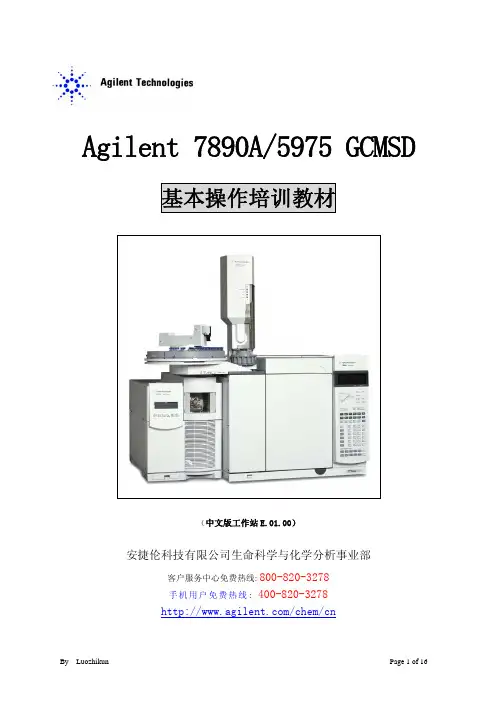
Agilent 7890A/5975 GCMSD 基本操作培训教材(中文版工作站E.01.00)安捷伦科技有限公司生命科学与化学分析事业部客户服务中心免费热线: 800-820-3278手机用户免费热线: 400-820-3278/chem/cnGCMSD开机操作过程:1. 开气: 打开载气(He)钢瓶的总阀开关,调整输出气压为约0.5M Pa2. 开电脑: 检查网络HUB是否通电,启动电脑,进入Windows 系统后。
3. 检查气密: 检查MSD正前方的Vent Valve是否已经Close关闭紧,检查柱箱内的质谱接口是否安装好色谱柱或者用死堵头密封。
4.开质谱: 翻开质谱仪的上盖,向右按住MSD侧板(注意:只能按住侧板上的RF发生器部位,即在中间方型的铝合金部位),打开质谱仪前左下方的电源开关,首先外部的机械泵会开始抽初级真空,大约过了1分钟,机械泵响声变小,MSD显示Pump down,并响“嘟”的一声,分子涡沦泵已经启动开始抽真空。
5. 开气相: 打开气相色谱仪前左下方的电源开关,GC进入自检后, 完成启动。
6. 联机: 双击电脑桌面的图标,进入MSD化学工作站。
7. 操作: 调用或者编辑相应的操作方法。
(至少要抽真空2小时以上才能工作。
)GCMSD关机操作过程:1.放空: 从MSD化学工作站中视图 菜单中转到调谐和真空控制再从菜单的真空Vacuum中按放空Vent命令,系统提示开始放空。
放空操作的作用是: (1).把GC OVEN设为30℃(2). 把MSD的分子涡沦泵的转速降下来(3). 把离子源及四极杆的温度降下来(<100℃)。
2. 降温: 把GC AUX2(质谱接口)温度off,把GC的前进样口(Front inlet)的温度OFF3. 关机: 约等1小时后,放空完成,退出MSD化学工作站,关掉GC和MSD的电源。
3. 关电脑: 退出电脑Windows系统,关掉电脑电源。
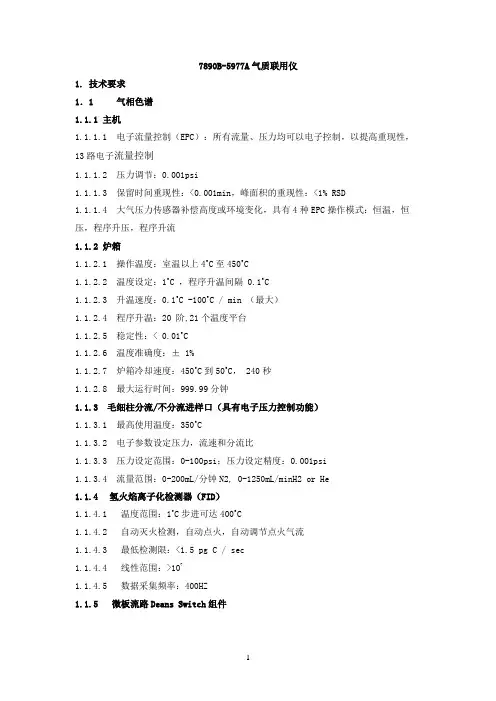
7890B-5977A气质联用仪1. 技术要求1.1 气相色谱1.1.1 主机1.1.1.1 电子流量控制(EPC):所有流量、压力均可以电子控制,以提高重现性,13路电子流量控制1.1.1.2 压力调节:0.001psi1.1.1.3 保留时间重现性:<0.001min,峰面积的重现性:<1% RSD1.1.1.4 大气压力传感器补偿高度或环境变化,具有4种EPC操作模式:恒温,恒压,程序升压,程序升流1.1.2 炉箱1.1.2.1 操作温度:室温以上4˚C至450˚C1.1.2.2 温度设定:1˚C ,程序升温间隔 0.1˚C1.1.2.3 升温速度:0.1˚C -100˚C / min (最大)1.1.2.4 程序升温:20 阶,21个温度平台1.1.2.5 稳定性:< 0.01˚C1.1.2.6 温度准确度:± 1%1.1.2.7 炉箱冷却速度:450˚C到50˚C, 240秒1.1.2.8 最大运行时间:999.99分钟1.1.3 毛细柱分流/不分流进样口(具有电子压力控制功能)1.1.3.1 最高使用温度:350˚C1.1.3.2 电子参数设定压力,流速和分流比1.1.3.3 压力设定范围:0-100psi;压力设定精度:0.001psi1.1.3.4 流量范围:0-200mL/分钟N2, 0-1250mL/minH2 or He1.1.4 氢火焰离子化检测器(FID)1.1.4.1 温度范围:1˚C步进可达400˚C1.1.4.2 自动灭火检测,自动点火,自动调节点火气流1.1.4.3 最低检测限:<1.5 pg C / sec1.1.4.4 线性范围:>1071.1.4.5 数据采集频率:400HZ1.1.5 微板流路Deans Switch组件1.1.5.1 功能:为二维GC 分析提供额外的选择性。
在一支色谱柱上可能共流出的感兴趣峰可以转移到另一支不同固定相的色谱柱上进行分离。
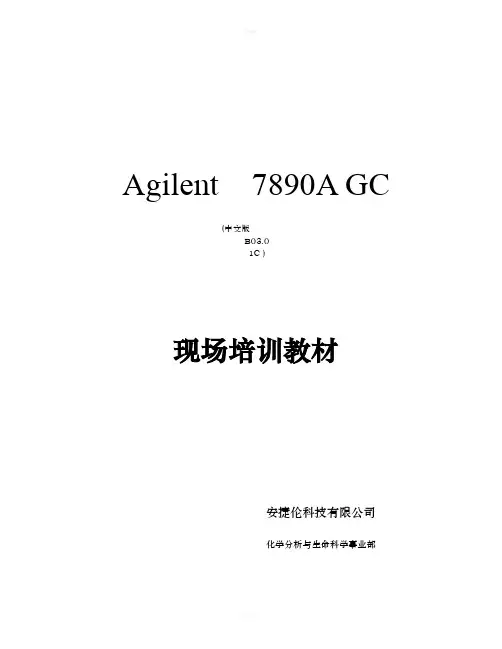
Agilent 7890A GC(中文版B03.01C)现场培训教材安捷伦科技有限公司化学分析与生命科学事业部一、培训目的:基本了解7890A 硬件操作。
掌握化学工作站的开机,关机,参数设定, 学会数据采集,数据分析的基本操作。
二、培训准备:1、仪器设备:Agilent7890A GC进样口: 填充柱进样口(PP);毛细柱进样口(S/SL); 冷柱头进样口(COC); PTV 进样口。
检测器:FID;TCD;uECD; NPD;FPD。
色谱柱:P/N 19091J-433, H P-5 毛细柱:30m,ⅹ320μχ0.25μ注射器:自动液体进样器(ALS)用10ul 注射器或手动进样用10ul 注射器。
进样体积: 1 ul。
2、气体准备:FID,NPD,FPD :高纯H2 (99.999%),干燥无油压缩空气。
uECD:高纯N2 (99.999%)载气, 高纯N2 (99.999%)或高纯He (99.999%)。
7890A/GC 化学工作站基本操作步骤:(一)、开机:2、打开计算机,进入中文Windows XP 画面。
3、打开7890A GC 电源开关。
(7890A 的IP 地址已通过其键盘提前输入进7890A)伦化学工作站”,选择“仪器1 联机”,则化学工作站自动与7890A 通讯,进入的工作站5、从“视图”菜单中选择“方法和运行控制”画面,点击“化学工作站状态”,使其命令前有“√”标志,点击“全部菜单”,使之显示为“短菜单”来调用所需的界面。
(二)7890A 配置编辑:1、点击“仪器”菜单,选择“GC 配置…”进入如图所示画面。
在“连接”画面下,输入GC 名称:如“GC 7890”;可在“注释”处输入7890A 的配置,如“7890GC with FID “Config”,2、自动进样器配置设定:点击“配置”按钮,点击“自动进样器”子按钮进入如下图所示画面,输入注射器的体积,如“10ul”;选择溶剂清洗模式:如A,B。

Agilent 7890A G C(中文版B03.01C )现场培训教材安捷伦科技有限公司化学分析与生命科学事业部一、培训目的:?基本了解7890A 硬件操作。
?掌握化学工作站的开机,关机,参数设定, 学会数据采集,数据分析的基本操作。
二、培训准备:1、仪器设备:Agilent7890A GC?进样口: 填充柱进样口(PP);毛细柱进样口(S/SL); 冷柱头进样口(COC); PTV 进样口。
?检测器:FID;TCD;u ECD; NPD;FPD。
?色谱柱:P/N 19091J-433, HP-5 毛细柱:30m,ⅹ320μχ0.25μ?注射器:自动液体进样器(ALS)用10ul 注射器或手动进样用10ul 注射器。
?进样体积: 1 ul。
2、气体准备:?FID,NPD,FPD :高纯H2 (99.999%),干燥无油压缩空气。
?uECD:高纯N2 (99.999%)?载气, 高纯N2 (99.999%)或高纯He (99.999%)。
7890A/GC 化学工作站基本操作步骤:(一)、开机:1、打开气源(按相应的所需气体)。
2、打开计算机,进入中文Windows XP 画面。
3、打开7890A GC 电源开关。
(7890A 的IP 地址已通过其键盘提前输入进7890A)4、双击桌面的“仪器 1 联机”图标;(或点击屏幕左下角“开始”,选择“程序”,选择“安捷伦化学工作站”,选择“仪器 1 联机”,则化学工作站自动与7890A 通讯,进入的工作站界面如下图:(通讯成功后,7890A 的遥控灯亮)5、从“视图”菜单中选择“方法和运行控制”画面,点击“化学工作站状态”,使其命令前有“√”标志,点击“全部菜单”,使之显示为“短菜单”来调用所需的界面。
(二)7890A 配置编辑:1、点击“仪器”菜单,选择“GC 配置…”进入如图所示画面。
在“连接”画面下,输入GC 名称:如“GC 7890”;可在“注释”处输入7890A 的配置,如“7890GC with FID FPD”。
RM7890A,B,C/EC7890A,B7800 系列继电器模块安装说明应用Honeywell RM7890A,B,C/EC7890A,B 继电器模块为半自动燃气、燃油或混合燃料燃烧器控制装置的微处理器。
RM/EC7890 继电器模块为RA890F,G, H 继电器初级控制的替代品。
RM/EC7890 系统包含一个继电器模块、底座和放大器。
也可包含电脑界面、键盘显示模块(KDM)、数据控制模块、远程显示设备、信号扩大器和燃烧系统管理器软件。
RM/EC7890 能够提供包含燃烧器自动顺序控制、火焰监控、系统位状指示信号、系统或自诊、发现并解决故障。
此文件提供了安装和检验说明。
其他应用出版物有:63-2278: Q7700 Network Interface Unit.65-0084: Q7800A,B 22-Terminal Wiring Subbase Product Data.65-0090: S7800A Keyboard Display Module Product Data.65-0091: S7810A Data ControlBus Module™ Product Data.65-0095: S7820 Remote Reset Module Product Data.65-0097: 221729C Dust Cover Packing Instructions.65-0101: S7830 Expanded Annunciator Product Data.65-0109: R7824, R7847, R7848, R7849, R7861, R7886Flame Amplifiers for the 7800 SERIES Product Data.65-0131: 221818A Extension Cable Assembly Product Data.65-0229: 7800 SERIES Relay Modules Checkout and Troubleshooting.说明额定电子数据 (见表3):电压和频率:RM7890: 120 Vac (+10/-15%), 50/60 Hz (±10%)。
7890B操作规程一.开机1.打开载气(N2)、空气、氢气等气源的开关,调整载气输出气压为约0.5 M Pa。
2.启动电脑,进入Windows 系统。
3.打开气相色谱仪前左下方的电源开关,等待GC自检完成。
4.双击电脑桌面的“Openlab控制面板”图标,输入账号和密码,点击“启动”,进入GC化学工作站“方法和运行控制”界面。
二.方法编辑1.在工作站“方法和运行控制”状态下,单击“方法”菜单,选择“编辑完整方法”子菜单,进入方法编辑状态。
2.进入“方法编辑”界面,单击确定,在“方法注释”下的框中输入对方法的描述,单击确定。
3.进样器设置: 在“选择进样源/位置”画面中选择“GC 进样器”,点击“确定”,进入下一画面。
4.柱模式设定:点击“色谱柱”图标,进入柱模式设定画面,选择控制模式为恒流模式,设置载气流速(如2ml/min)。
5.分流不分流进样口参数设定: 点击“进样口”图标,进入进样口设定画面。
输入进样口的温度(如250℃),输入隔垫吹扫流量(如3ml/min)。
点击“模式”右方的下拉式箭头,选择进样方式为“分流或不分流”。
在“分流出口吹扫流量”下边的空白框内输入吹扫流量(如 0.75min ,60ml/min);如选择分流方式, 则要输入“分流比”(如20:1)。
6.柱温箱温度参数设定: 点击“柱箱”图标,进入柱温参数设定。
在空白表框内输入温度,选中“柱温箱温度为开”,在右侧的方框内输入程序升温的参数。
7.FID检测器参数设定:点击“检测器”图标,进入检测器参数设定。
输入检测器温度(如300℃),氢气30ml/min,空气400ml/min,尾吹25ml/min,火焰前打勾。
8.信号参数设定:点击“信号”图标,进入信号参数设定画面。
点击“信号源”下方下拉式箭头,选择“前部信号FID”,点击“数据采集频率/最小峰宽”下方的下拉式箭头,选择数据采集数率(如20HZ),选择“保存”,存储所有的数据。
Agilent 7890A GC(中文版B04.03 )现场培训教材安捷伦科技有限公司化学分析事业部一、培训目的:∙基本了解7890A硬件操作。
∙掌握化学工作站的开机,关机,参数设定, 学会数据采集,数据分析的基本操作。
二、培训准备:1、仪器设备:Agilent 7890A GC∙进样口: 填充柱进样口(PP);毛细柱进样口(S/SL);冷柱头进样口(COC);VI 进样口;PTV进样口;多模式进样口MMI。
∙检测器:FID;TCD;u-ECD;NPD;FPD。
∙色谱柱:P/N 19091J-413, HP-5毛细柱:30m,ⅹ320μχ0.25μ∙注射器:自动液体进样器(ALS)用10ul注射器或手动进样用10ul注射器。
∙进样体积: 1 ul或见Check Out方法。
2、气体准备:∙FID,NPD,FPD :高纯H2 (99.999%),干燥无油压缩空气。
∙uECD:高纯N2 (99.999%)∙载气,:高纯N2 (99.999%)或高纯He (99.999%)。
7890A/GC 化学工作站基本操作步骤:(一)、开机:1、打开气源(按相应的所需气体)。
2、打开计算机,进入中文Windows XP或者Windows7画面。
3、打开7890A GC电源开关,先设定7890A GC及PC的IP地址,然后在软件里设定7890AGC的IP地址。
(点击屏幕左下角“开始”,选择“所有程序(P)”,选择“Agilent Chemstation”,选择“配置编辑器”,选择菜单“配置”下面的“仪器”完成后,分别会得到“仪器1 联机”/或“仪器1 脱机”选项,也可以把其发送到桌面建立快捷方式。
)4、双击桌面的“仪器1 联机”/或“仪器2 联机”图标;(或点击屏幕左下角“开始”,选择“所有程序(P)”,选择“Agilent Chemstation”,选择“仪器1 联机”/或“仪器2 联机”,则化学工作站自动与7890A通讯,进入的工作站界面如下图:(通讯成功后,7890A的Remote 遥控灯亮)5、从“视图”菜单中选择“方法和运行控制”或点击快捷按钮进入该画面,在“视图”菜单中,点击“仪器图表”,点击“仪器实际值”,点击“样品视图”,使其命令前有“√”标志,点击“全部菜单”,使之显示为“短菜单”,依次来调用所需的界面。